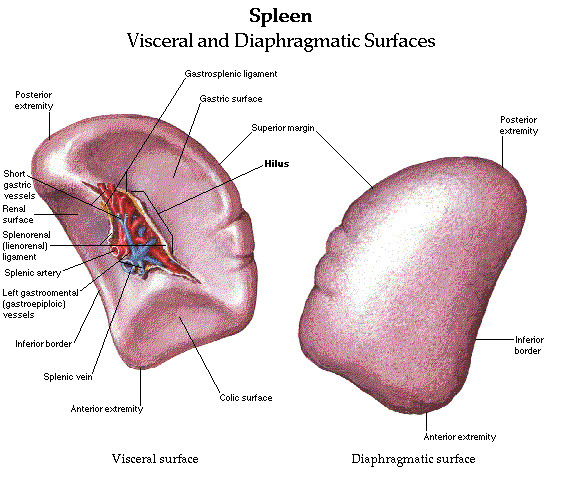
Which one is called the graveyard of RBCs?
A) Liver
B) Kidney
C) Hart
D) spleen
Answer
576k+ views
Hint:The important role in the red blood cells also known as erythrocytes and the digestive system. About 2.5 million of RBCs are destroyed in one second. After ingestion of RBCs by macrophages, the hemoglobin is separated into haem and globin.
Complete answer:
Red platelets, or erythrocytes, are one of the components of blood. (The others are plasma, platelets and white platelets.) They are consistently created in our bone marrow. Only a few drops of blood can contain around one billion red platelets – indeed, that is the thing that gives our blood that unmistakable red shading. RBCs are shaped in the red bone marrow from hematopoietic immature microorganisms in a cycle known as erythropoiesis. In grown-ups, about 2.4 million RBCs are delivered each second. The typical RBCs check is 4.5 to 5 million for every cu.mm. RBCs have a life expectancy of roughly 100-120 days. After they have finished their life expectancy, they are eliminated from the circulatory system by the spleen.
Spleen is known as the graveyard of RBCs in light of the fact that after fulfillment of life expectancy, RBCs are pulverized in the spleen where they are ingested by free macrophages. About 2.5 million of RBCs are destroyed in one second.

Thus, the option (D) is the correct answer.
Note:The important thing is the red blood conveys oxygen from our lungs to the remainder of our bodies. At that point they make the return trip, returning carbon dioxide to our lungs to be breathed out. This process makes the human to live.
Complete answer:
Red platelets, or erythrocytes, are one of the components of blood. (The others are plasma, platelets and white platelets.) They are consistently created in our bone marrow. Only a few drops of blood can contain around one billion red platelets – indeed, that is the thing that gives our blood that unmistakable red shading. RBCs are shaped in the red bone marrow from hematopoietic immature microorganisms in a cycle known as erythropoiesis. In grown-ups, about 2.4 million RBCs are delivered each second. The typical RBCs check is 4.5 to 5 million for every cu.mm. RBCs have a life expectancy of roughly 100-120 days. After they have finished their life expectancy, they are eliminated from the circulatory system by the spleen.
Spleen is known as the graveyard of RBCs in light of the fact that after fulfillment of life expectancy, RBCs are pulverized in the spleen where they are ingested by free macrophages. About 2.5 million of RBCs are destroyed in one second.

Thus, the option (D) is the correct answer.
Note:The important thing is the red blood conveys oxygen from our lungs to the remainder of our bodies. At that point they make the return trip, returning carbon dioxide to our lungs to be breathed out. This process makes the human to live.
Recently Updated Pages
Master Class 12 Business Studies: Engaging Questions & Answers for Success

Master Class 12 Economics: Engaging Questions & Answers for Success

Master Class 12 English: Engaging Questions & Answers for Success

Master Class 12 Maths: Engaging Questions & Answers for Success

Master Class 12 Social Science: Engaging Questions & Answers for Success

Master Class 12 Chemistry: Engaging Questions & Answers for Success

Trending doubts
What are the major means of transport Explain each class 12 social science CBSE

Which are the Top 10 Largest Countries of the World?

Draw a labelled sketch of the human eye class 12 physics CBSE

Explain sex determination in humans with line diag class 12 biology CBSE

The pH of the pancreatic juice is A 64 B 86 C 120 D class 12 biology CBSE

Give 10 examples of unisexual and bisexual flowers




